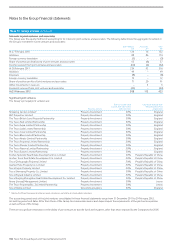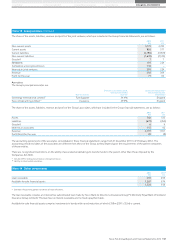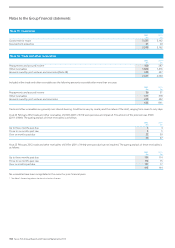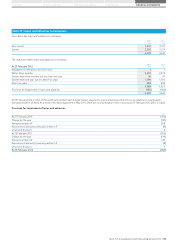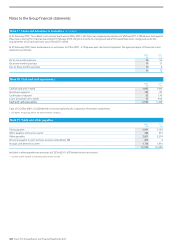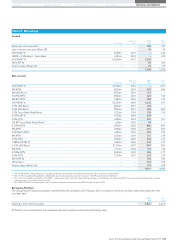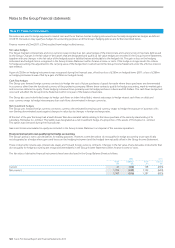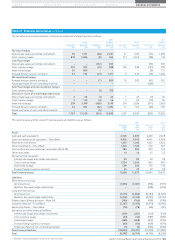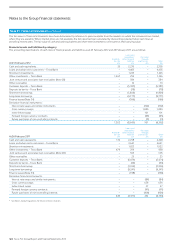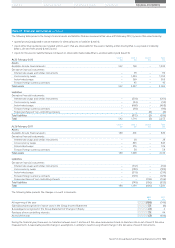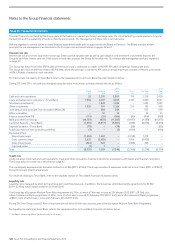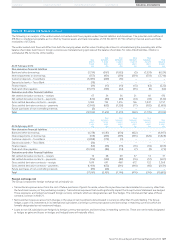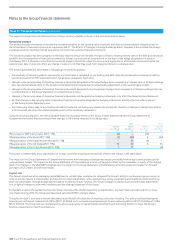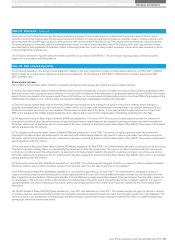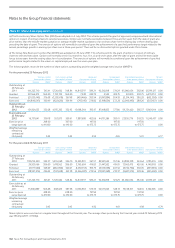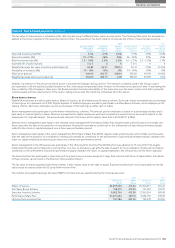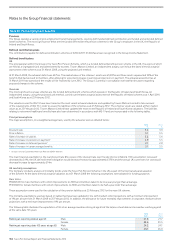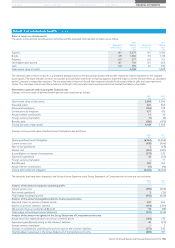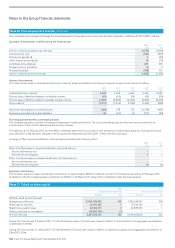Tesco 2012 Annual Report Download - page 130
Download and view the complete annual report
Please find page 130 of the 2012 Tesco annual report below. You can navigate through the pages in the report by either clicking on the pages listed below, or by using the keyword search tool below to find specific information within the annual report.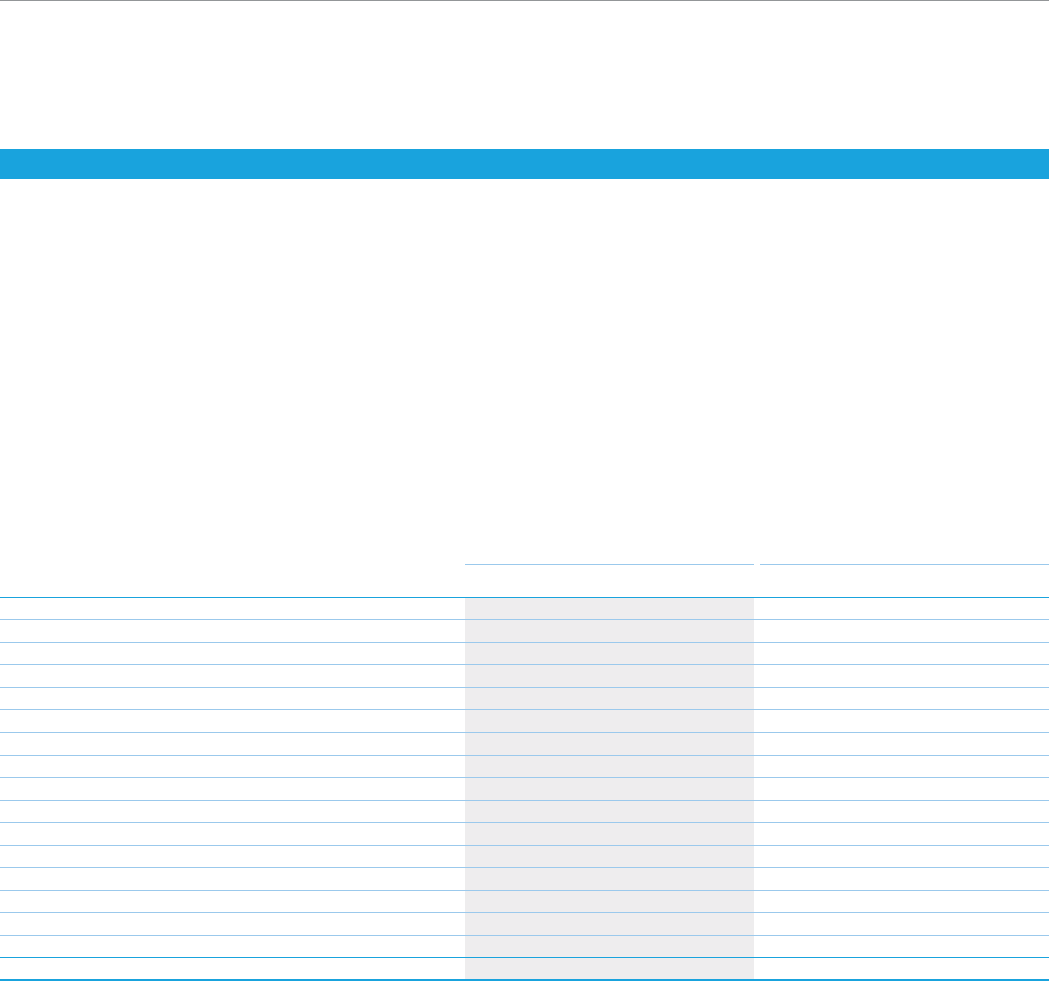
Notes to the Group financial statements
Note 22 Financial risk factors
The main financial risks faced by the Group relate to fluctuations in interest and foreign exchange rates, the risk of default by counterparties to financial
transactions and the availability of funds to meet business needs. The management of these risks is set out below.
Risk management is carried out by a central treasury department under policies approved by the Board of Directors. The Board provides written
principles for risk management, as described in the Principal risks and uncertainties on pages 40 to 47.
Interest rate risk
Interest rate risk arises from long-term borrowings. Debt issued at variable rates as well as cash deposits and short-term investments exposes the
Groupto cash flow interest rate risk. Debt issued at fixed rates exposes the Group to fair value risk. Our interest rate management policy is explained
onpage 47.
The Group has Retail Price Index (‘RPI’) debt where the principal is indexed to increases in the RPI. RPI debt is treated as floating rate debt.
The Group also has Limited Price lnflation (‘LPI’) debt, where the principal is indexed to RPI, with an annual maximum increase of 5% and a minimum
of0%. LPI debt is treated as fixed rate debt.
For interest rate risk relating to Tesco Bank, refer to the separate section on Tesco Bank financial risk factors below.
During 2012 and 2011, net debt was managed using derivative instruments to hedge interest rate risk as follows:
2012 2011*
Fixed
£m
Floating
£m
Total
£m
Fixed
£m
Floating
£m
Total
£m
Cash and cash equivalents 35 2,270 2,305 170 2,258 2,428
Loans and advances to customers – Tesco Bank 1,956 2,447 4,403 2,161 2,480 4,641
Short-term investments – 1,243 1,243 –1,0221,022
Other investments 1,335 191 1,526 755 183 938
Joint venture and associate, loan receivables (Note 28) – 384 384 –503503
Other receivables – 10 10 –2525
Finance leases (Note 34) (111) (55) (166) (92) (106) (198)
Bank and other borrowings (10,729) (854) (11,583) (9,697) (1,180) (10,877)
Customer deposits – Tesco Bank (1,470) (3,917) (5,387) (398) (4,676) (5,074)
Deposits by banks – Tesco Bank (78) – (78) (36) – (36)
Future purchases of non-controlling interests (3) – (3) (106) – (106)
Derivative effect:
Interest rate swaps (1,402) 1,402 – (1,218) 1,218 –
Cross currency swaps 2,635 (2,635) – 3,459 (3,459) –
Index-linked swaps (522) 522 – (498) 498 –
Caps and collars (1) 1 – –––
Total (8,355) 1,009 (7,346) (5,500) (1,234) (6,734)
Credit risk
Credit risk arises from cash and cash equivalents, trade and other receivables, financial instruments and deposits with banks and financial institutions.
The Group policy on credit risk is described on page 47.
The counterparty exposure under derivative contracts is £1.8bn (2011: £1.3bn). The Group considers its maximum credit risk to be £11.6bn (2011: £10.8bn*),
being the Group’s total financial assets.
For credit risk relating to Tesco Bank, refer to the separate section on Tesco Bank financial risk factors below.
Liquidity risk
Liquidity risk is managed by short-term and long-term cash flow forecasts. In addition, the Group has committed facility agreements for £2.8bn
(2011: £2.8bn), which mature between 2014 and 2015.
The Group has a European Medium Term Note programme of £15bn, of which £7.4bn was in issue at 25 February 2012 (2011: £8.5bn), plus
a Euro Commercial Paper programme of £2bn, none of which was in issue at 25 February 2012 (2011: £nil), and a US Commercial Paper programme
of $4bn, none of which was in issue at 25 February 2012 (2011: £nil).
During 2012 the Group issued £1.4bn of long-term debt of which £0.6bn was issued as part of the European Medium Term Note Programme.
For liquidity risk relating to Tesco Bank, refer to the separate section on Tesco Bank financial risk factors below.
* See Note 1 Accounting policies for details of reclassifications.
126 Tesco PLC Annual Report and Financial Statements 2012


